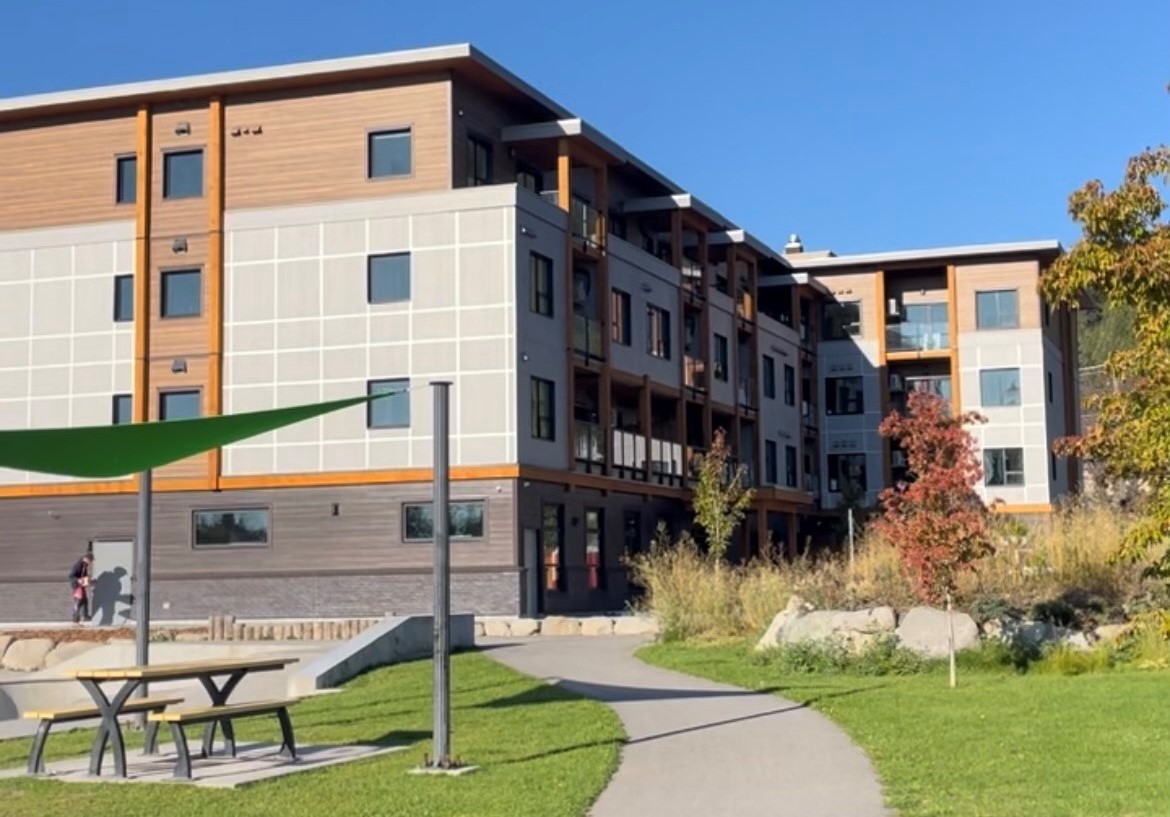This article is part of a series called How energy-efficient affordable housing is improving the lives of Canadians. The series features the inspiring stories of six Canadians who are living comfortably and saving money thanks to energy-efficient affordable housing.
For Megan, living at Rossland Yards in British Columbia’s Kootenay region has meant more than just finding a place to live—it’s meant finding stability.
“I’ve lived in the Kootenays my whole life,” she says. “I’ve been at Rossland Yards for about a year and a half now, and it’s been such a good fit for me and my boys.”
Megan lives in a two-bedroom unit with her 12-year-old son and her 18-year-old nephew, who stays with them part-time. After years of renting in different communities, she says the difference in comfort, safety, and affordability has been life changing. “I feel safe here, and the boys are happy," she says. "That’s the biggest thing.”
A safe, family-friendly space
Before moving to Rossland Yards, Megan lived in older, more expensive homes that didn’t always feel secure. “I was paying over $2,000 a month for a place where I couldn’t even use the backyard,” she recalls. “It just didn’t feel safe.”
At Rossland Yards, things are different. “Security was a huge thing for me,” she says. “You need a fob to get in, and I’ve never had any problems. It makes me feel more comfortable—especially as a mom.” Her new home, she says, is bright, spacious and welcoming.
“My unit is perfect for me and the boys. We each have our space, and it’s big enough for them to play or hang out. It’s really lovely.”
The building’s pet-friendly policy is important to them as well. In the past, it was difficult for the family to find housing because many landlords didn’t want pets or kids. “I have a cat—she’s a pretty expensive one,” she says with a laugh. “I’m so glad I was able to bring her. Here, we’re accepted as we are.”
Comfort that makes a difference
For Megan, comfort is about more than convenience—it’s about health and peace of mind. She lives with chronic bronchitis, so stable indoor temperatures matter.
"I’ve rented lots of places over the years, and this is the only one that hasn’t been drafty. The temperature stays steady all year—I’ve never even had to turn on the baseboard heaters. That consistency has made a real difference for my health. In the past, moving from a warm room to a cold one would trigger my bronchitis, but here it’s all one temperature. It’s honestly been good for my health.”
She also appreciates how well the building’s systems keep the air fresh. “There are little vents that bring in clean air, so it never feels stuffy,” she says. “It’s a neat feature, and it makes a difference, especially for me and the boys.”
Affordability that creates room to breathe
In addition to feeling healthier and more secure, Megan says the affordability of her home has eased a major burden.
“Before, I was always behind on bills. Now, I’m actually ahead—I even have a credit on my account. It’s a huge break.”
Having predictable costs means she can plan for the future. “It’s affordable, and that makes all the difference,” she says. “I can put money away for when the boys are older and want to travel or do their own thing. I’ve never been able to do that before.”
That stability, she explains, has reduced stress for the whole family. “I’m happier, which means the boys are happier,” she says. “I’m not constantly worried about rent or utilities. It’s such a relief.”
Room to grow
With that stability has come time to focus on what she loves. “I’m a bit of a language nerd,” she says, smiling. “Since moving here, I’ve learned a few new languages just because I have the time now. I’m not constantly running around trying to make ends meet.”
She also spends more time with her sons—going camping, hiking, or just getting outside. “We’re outdoors people,” she says. “Now, when I tell them to go play or go for a walk, I know they’re safe. They can go to the skate park, they can bike, they can just be kids.” For Megan, that sense of balance—safety, affordability, and the freedom to enjoy life—is what makes Rossland Yards special.
“This place is my favourite out of everywhere I’ve lived. It’s safe, it’s beautiful, and it feels like home.”
Rossland Yards was developed by the Lower Columbia Affordable Housing Society and supported by the Green Municipal Fund’s Sustainable Affordable Housing (SAH) initiative.
